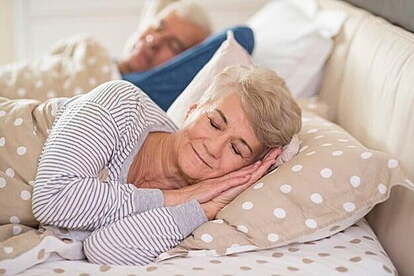Dear Diana, 2/27/19
We need someone to help settle a debate we are having in our household. It is over what to set the thermostat on during the night. I tend to turn the heat down when everyone goes to bed. My thinking is that we are warmer “under our covers.” My husband thinks we should turn it up. His thinking is that we could catch a cold or get sick if the house is too cool.
I typically let him pass by the thermostat on the way to bed and like clockwork, he will turn the heat up. I will usually wait a few minutes, usually enough time for him to hear the furnace kick in so he is comfortable going to sleep. I’ll go by and turn it back down. Nine out of ten nights, he seems to be none the wiser and sleeps like a baby. I dare not let him in on my strategy, especially if he is happy and thinks the house is plenty warm.
What is your take on where the thermostat should be during the night?
Sincerely,
Ellen
Dear Ellen,
You are not the only ones who debate over where the thermostat should be overnight. I hear this question often. My answer to you is that it is a matter of preference. Some simply like it warmer at night, and some like it cooler.
There are some debate points, however, you can share with your husband if you decide to go another round with him. As far as getting sick in a cooler house, I am not a medical doctor so don’t feel qualified to say whether his thoughts on this are accurate or not.
Sleep experts and medical doctors will confirm there are advantages to keeping a bedroom at a comfortable level for sleeping and often do recommend those temperatures to be on the cooler side, usually between 65 and 72 degrees Fahrenheit. Bottom line, comfort level is defined by everyone differently.
A good reminder is that our body’s built-in thermostats go down at night on their own, as a preparation for going to sleep. This small drop in body temperature helps facilitate a transition to sleep. As it gets closer to morning, our bodies’ temperatures increase. So, during the time in between, establishing a temperature level comfortable for you to be able to fall asleep and be able to fall back to sleep if you wake up during the night is what will help you get the best night’s sleep.
Between you and your husband, you will have to experiment with what temperature levels will satisfy both of you. My suggestion is to always be up front with your husband! I know couples who are opposites when it comes to sleep comfort preferences. I am going to guess you may have tried a number of things already. But maybe having an extra blanket over one, or one less blanket over the other could help balance out the too hot or too cold while sleeping. The key is for both of you to sleep well.
Lots of couples use a spare bedroom that doubles as both a “snoring room” and / or a “we’ve gotta get a good night’s sleep room.” Every so many nights, one of them may bunk out in this spare room so they both ultimately sleep good that night. This option may or may not work for you. Many couples are challenged with different sleeping preferences. Look back to the “team” in your relationship to help decide what temperature levels translate into a good night’s sleep, a better night’s sleep, or the best night’s sleep for you both. I have confidence that you and your husband will find an amenable temperature range or combination of solutions that provide you both with restful nights.
Thanks for writing,
Diana





